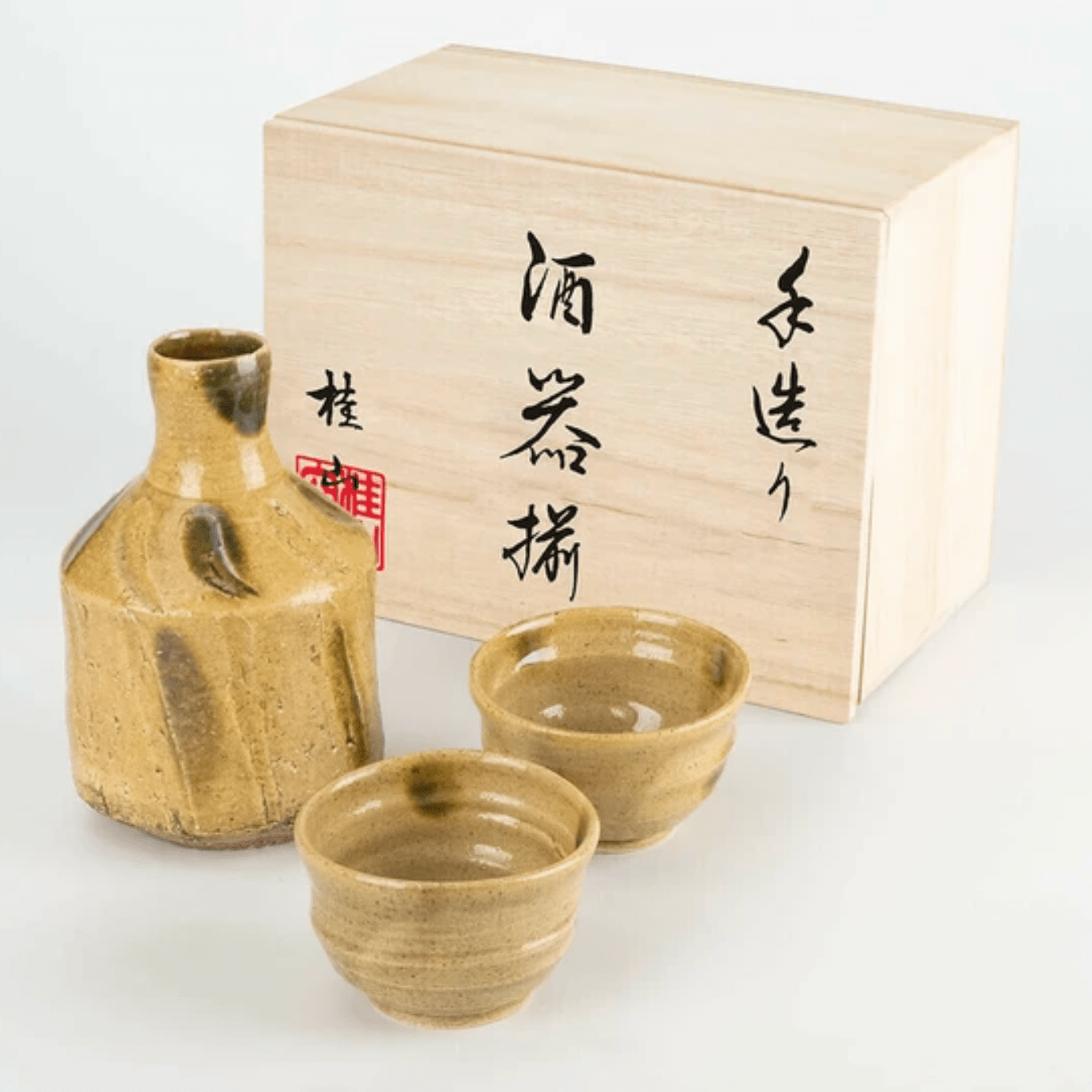
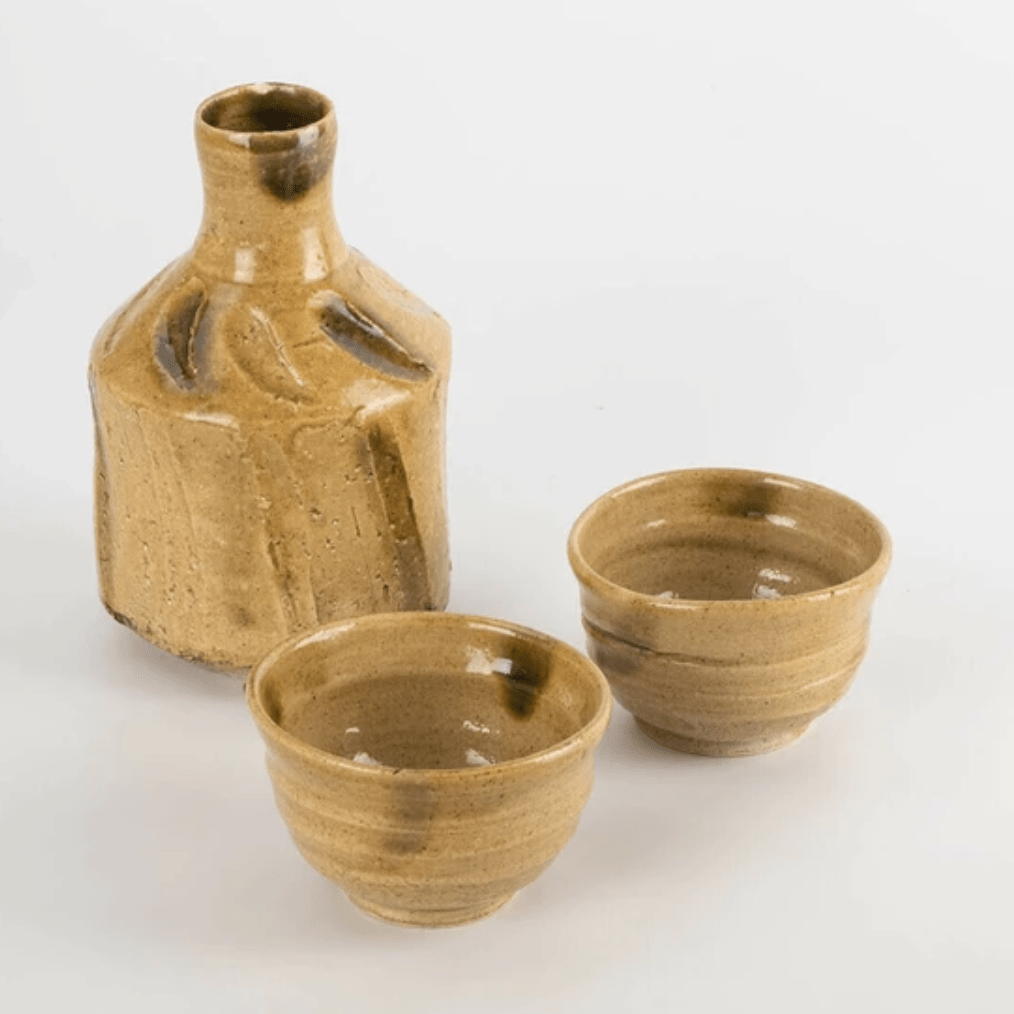
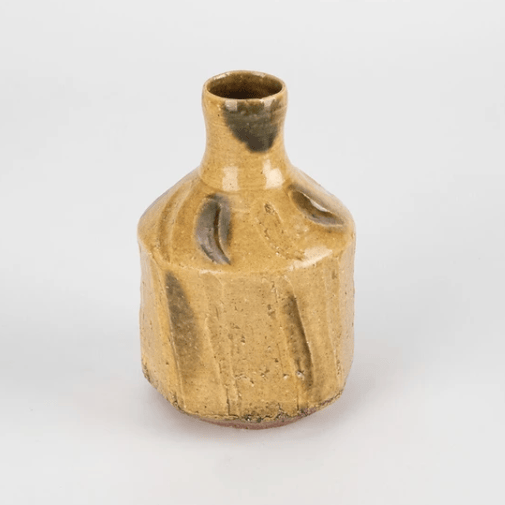
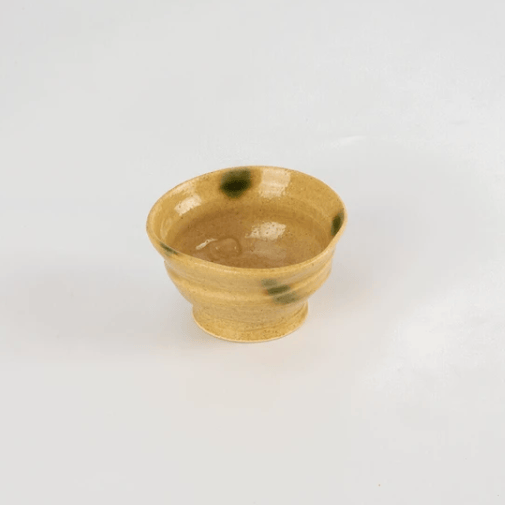
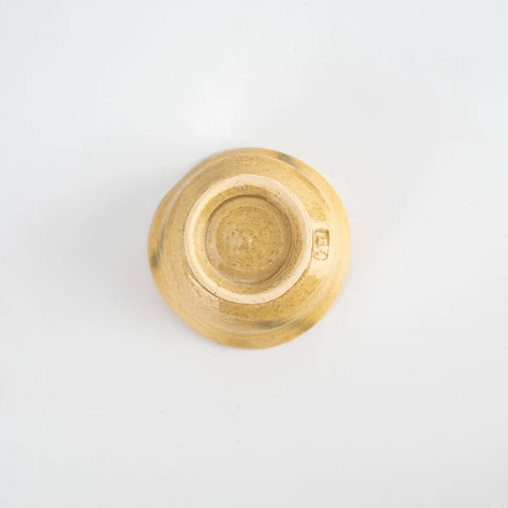
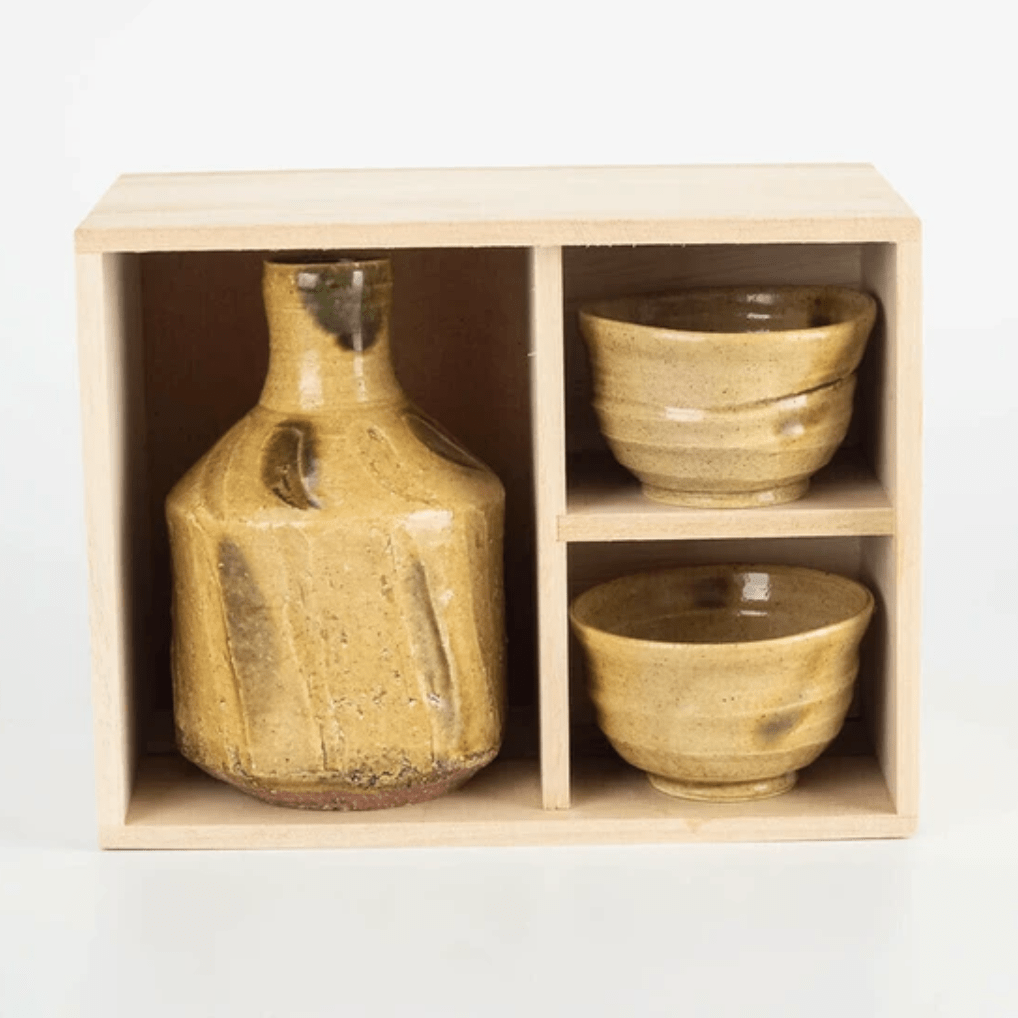
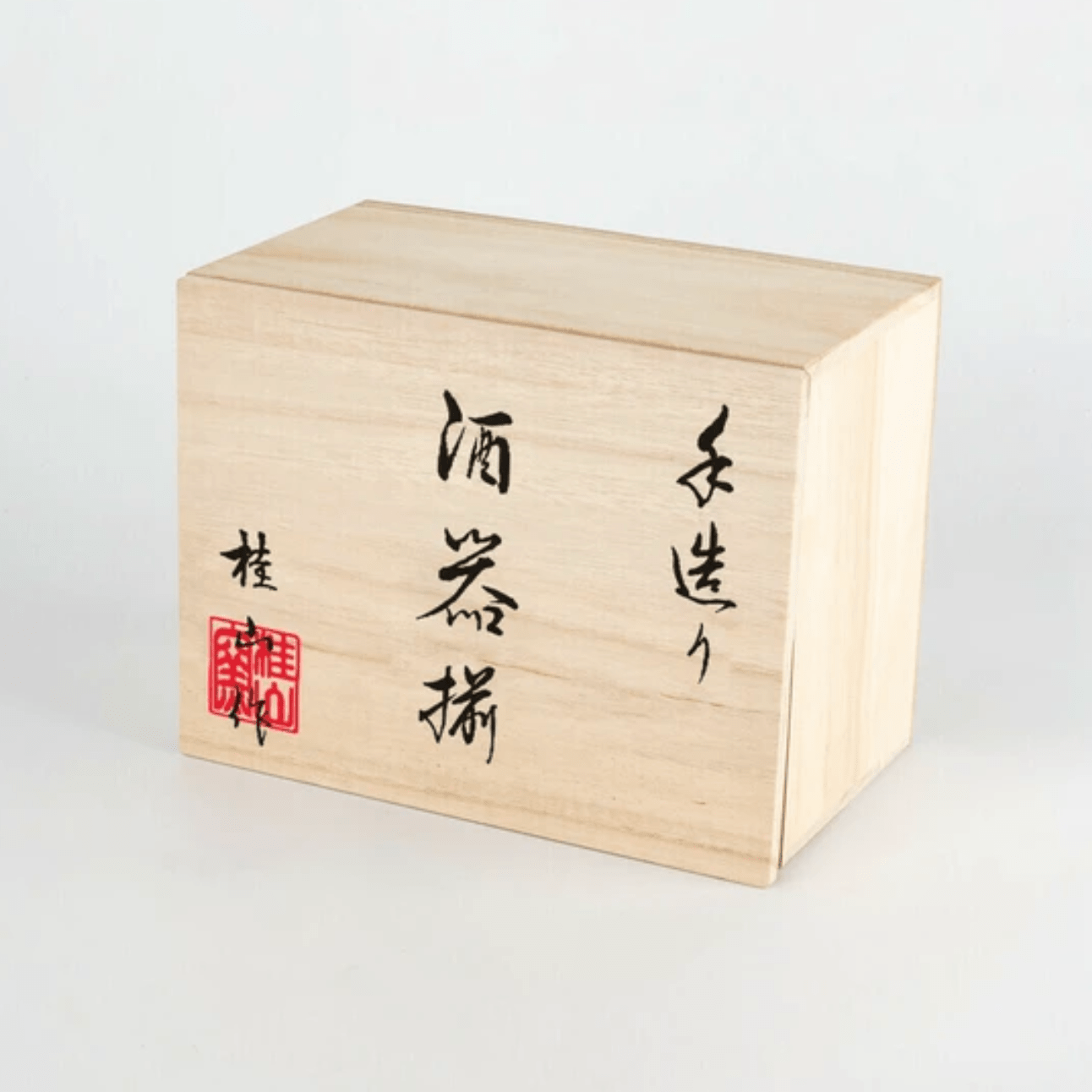
Handmade Kiseto Sake Set
Fast & Secure Delivery from Japan to your Door [Shipping Policy]
Shop Safely with Encrypted Checkout and Verified Gateways.
Pairs well with

Handmade Kiseto Sake Set
Golden Serenity – Handmade Kiseto Sake Set by Keizan Kiln
Crafted by award-winning artisan Kazufumi Wada of Keizan Kiln, this Handmade Kiseto Sake Set pays homage to Japan’s folkcraft traditions. As a recipient of the Takuo Award—honoring exceptional Mino ware artisans—Wada’s work blends reverence for history with quiet innovation. Each vessel is wheel-thrown and fired in Japan, ensuring every curve, ridge, and mark of the hand is preserved in ceramic form.
The warm golden glaze known as Kiseto is one of Mino ware’s most beloved finishes. Its name, meaning “Yellow Seto,” dates back centuries, and its subtle elegance remains a fixture in traditional Japanese tableware. Specks of iron and organic brush textures give each piece a soft, rustic character. The set includes one full-bodied tokkuri and two perfectly sized sake cups, designed for both everyday use and ceremonial sipping.
Elegant Gift Box & Refined Simplicity
Packaged in a wooden box adorned with Japanese calligraphy and a red seal, this set makes an impression before it’s even opened. The vessels rest snugly within custom compartments, highlighting their sculptural presence and making storage effortless. Whether shared over a slow meal or admired on a shelf, this sake set offers a tangible connection to the soulful craft of Gifu's famed pottery tradition.
Bring golden tranquility to your sake ritual with the Handmade Kiseto Sake Set—a celebration of warmth, heritage, and human touch.
Product Information
Care instructions
Note
FAQs
All you need to know about Japanese Pottery.
What types of traditional pottery are made in Japan?
Japan is home to several renowned pottery styles, including Mino ware (Gifu), Bizen ware (Okayama), Arita and Imari ware (Saga), Shigaraki ware (Shiga), and Mashiko ware (Tochigi). Each region has its own distinct materials, glazes, and firing techniques that reflect local history and aesthetics. Toki City in Gifu Prefecture is particularly renowned as the heart of Mino ware (Minoyaki)—the most widely produced pottery style in Japan.
What materials are used in artisan Japanese pottery?
Most artisan pottery in Japan is made from locally sourced clay, often mixed and refined by hand. Natural minerals and ash are used in glazes, and many pieces are wood-fired or fired in traditional climbing kilns (noborigama), producing unique surface textures and natural variations.
Are artisan Japanese pottery pieces safe for food use?
Yes. Authentic artisan pottery is made with food-safe, lead-free glazes and is carefully fired at high temperatures to ensure durability and safety. However, it's important to follow care instructions, especially for unglazed or porous ceramics.
What makes Japanese pottery different from Western ceramics?
Japanese pottery often emphasizes wabi-sabi—the beauty of imperfection—resulting in organic shapes, subtle asymmetry, and natural glazes. Unlike Western ceramics, which may prioritize uniformity, Japanese pieces often celebrate the individuality of each item, reflecting the artist's hand and the firing process.
How should I care for artisan-made Japanese pottery?
Hand-wash pottery with mild soap and avoid extreme temperature changes (like placing hot items into cold water). Some unglazed pieces may absorb moisture, so allow them to fully dry before storing. Avoid microwaves or dishwashers unless the piece is specifically labeled as safe for such use.
Do I need to season my matcha bowls before using them?
In most cases, seasoning a matcha bowl is not necessary—especially if the bowl is fully glazed, as the glaze naturally seals the surface and makes it ready for use. However, if the bowl is unglazed or has a raw clay base, a simple seasoning process called medome can help prevent cracking or staining. To season, soak the bowl in warm water mixed with a spoonful of cooked rice or flour for about 30–60 minutes, then rinse and let it dry completely. This step helps fill tiny pores in the ceramic and adds durability over time.

